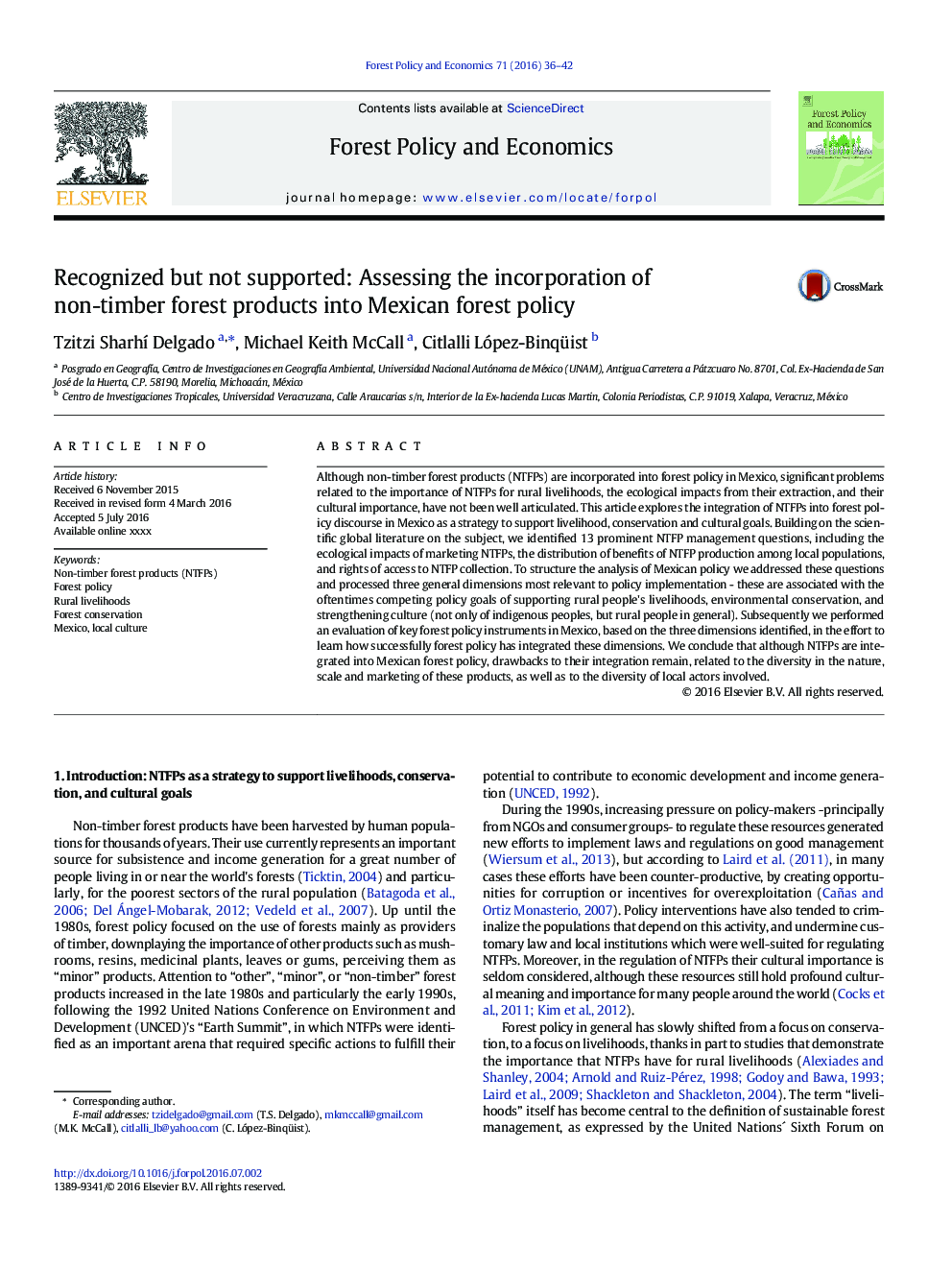| Article ID | Journal | Published Year | Pages | File Type |
|---|---|---|---|---|
| 91596 | Forest Policy and Economics | 2016 | 7 Pages |
•Forest policy has slowly shifted from a focus on conservation to a focus on livelihoods.•Mexican forest policy is ambiguous when referring to the scale of production of NTFPs.•Lack of formally recognized land tenure limits people's access to support programs.•Forest policy does not consider impacts of conservation actions on forest diversity.•Legal restrictions are complex and inefficient to sustainably manage NTFPs.
Although non-timber forest products (NTFPs) are incorporated into forest policy in Mexico, significant problems related to the importance of NTFPs for rural livelihoods, the ecological impacts from their extraction, and their cultural importance, have not been well articulated. This article explores the integration of NTFPs into forest policy discourse in Mexico as a strategy to support livelihood, conservation and cultural goals. Building on the scientific global literature on the subject, we identified 13 prominent NTFP management questions, including the ecological impacts of marketing NTFPs, the distribution of benefits of NTFP production among local populations, and rights of access to NTFP collection. To structure the analysis of Mexican policy we addressed these questions and processed three general dimensions most relevant to policy implementation - these are associated with the oftentimes competing policy goals of supporting rural people's livelihoods, environmental conservation, and strengthening culture (not only of indigenous peoples, but rural people in general). Subsequently we performed an evaluation of key forest policy instruments in Mexico, based on the three dimensions identified, in the effort to learn how successfully forest policy has integrated these dimensions. We conclude that although NTFPs are integrated into Mexican forest policy, drawbacks to their integration remain, related to the diversity in the nature, scale and marketing of these products, as well as to the diversity of local actors involved.
